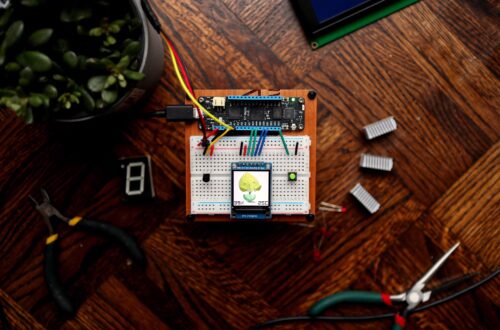The Truth About Talking Cars
Let’s be honest—most in-car voice assistants still feel like relics from 2010. Drivers shout commands, the system misunderstands, and we end up jabbing at touchscreens anyway. Yet despite that reputation, automotive voice AI is evolving fast. The difference? This new generation of assistants actually listens.
But it’s not just about convenience anymore—it’s about safety, connectivity, and driver experience. When implemented right, voice AI becomes the nerve center of the connected car ecosystem, reducing distraction and making driving feel intuitive again.
The catch? Getting it right takes far more engineering finesse (and patience) than most automakers expected.
The Hype vs The Road Reality
For years, automakers marketed “AI assistants” that could allegedly do anything—play music, set temperature, find coffee shops. The reality? Limited command lists and frustrating latency.
Here’s what’s changed by 2025:
- Natural language understanding (NLU) has improved dramatically.
- Edge computing now enables sub-300ms latency.
- Connectivity integration links assistants to vehicle telematics, infotainment, and external data APIs.
The result is systems that not only hear commands but understand intent. Ask, “Find a quiet café nearby,” and the AI can infer you want somewhere with minimal noise and available parking.
Still, the gap between premium OEMs and mass-market vehicles remains wide. And that’s where strategy—not just tech—makes the difference.
Under the Hood: How Modern In-Car Voice Systems Work
Let’s get technical for a moment. Today’s in-car voice assistant https://tringtring.ai/featuresarchitecture includes five core layers:
- Wake Word Engine — Detects a predefined phrase like “Hey Drive.” Accuracy above 95% is essential to avoid false triggers.
- Speech Recognition (ASR) — Converts speech to text locally or via cloud servers, depending on latency requirements.
- NLU Module — Deciphers driver intent and context (e.g., “cold” might mean AC temperature, not emotion).
- Integration Layer — Connects voice output to in-vehicle systems: HVAC, media, navigation, diagnostics.
- Response Synthesis (TTS) — Delivers contextual responses, ideally sounding human but not uncanny.
“We architected hybrid inference—edge for quick tasks, cloud for context-heavy queries. That cut latency by 42% and improved recognition by 11%.”
— Technical Lead, Global Automotive OEM
Safety and the Human Factor
Voice AI isn’t a luxury add-on—it’s a safety feature. Distracted driving accounts for nearly 12% of road accidents globally, according to the World Health Organization. Systems that allow fully hands-free control can significantly reduce this risk.
In practice:
- Drivers keep eyes on the road while navigating, calling, or adjusting settings.
- Systems proactively alert users when fatigue or stress patterns are detected in voice tone.
- Predictive models even suggest rest stops or call emergency services automatically in extreme cases.
But as with all automation, false positives and overconfidence remain risks. The best systems keep the human firmly in control—voice assists, it doesn’t dictate.
The ROI for Automakers
From a business lens, in-car voice AI is becoming a profit lever, not just a cost center. OEMs integrating proprietary assistants have reported:
- 15–20% higher driver engagement with infotainment systems.
- Reduced reliance on third-party ecosystems (like Google Assistant or Alexa).
- Data-driven insights from aggregated voice interactions feeding into vehicle design and predictive maintenance.
The competitive edge lies in data ownership. Whoever controls the conversation data controls the user relationship—and, by extension, the aftermarket revenue stream.
Challenges Still on the Highway
Voice AI for vehicles isn’t a solved problem. Key hurdles include:
- Noise variability: Engine sounds, open windows, and passengers create unpredictable acoustic environments.
- Accent adaptation: A single English model won’t suffice across global markets.
- Privacy concerns: Voice logs tied to driver profiles require airtight data governance.
- Integration fragmentation: Cars contain dozens of microcontrollers—getting them to “speak” to the AI smoothly remains complex.
These challenges don’t kill the vision—they just remind us it’s not a plug-and-play future.
The Strategic Horizon: From Commands to Conversations
The next leap won’t come from faster models—it’ll come from contextual intelligence. The ability for your car to anticipate your needs based on past behavior.
You’ll say less. The system will infer more.
“Heading to work?” “Yes.” And without another word, navigation starts, seat warms, and your favorite morning playlist begins.
That’s not about novelty—it’s about designing vehicles that understand their drivers.
“Our benchmark isn’t human replacement—it’s human rhythm. When voice fits seamlessly into that rhythm, adoption skyrockets.”
— Head of Connected Experiences, European Auto Group
The Bottom Line
Voice AI in automotive has moved past the gimmick phase. The technology now sits at the intersection of UX design, safety innovation, and data strategy. But the winners won’t be those who rush to ship—it’ll be those who tune their systems with the same care they tune their engines.
Because when you think about it, the real promise of in-car voice assistants isn’t that cars can talk.
It’s that they can finally listen.






